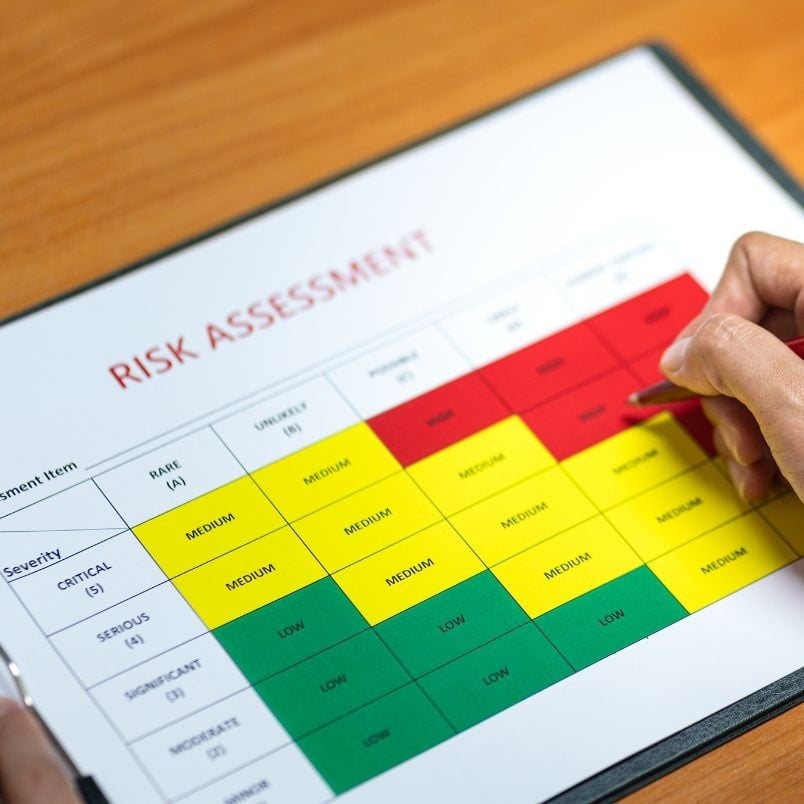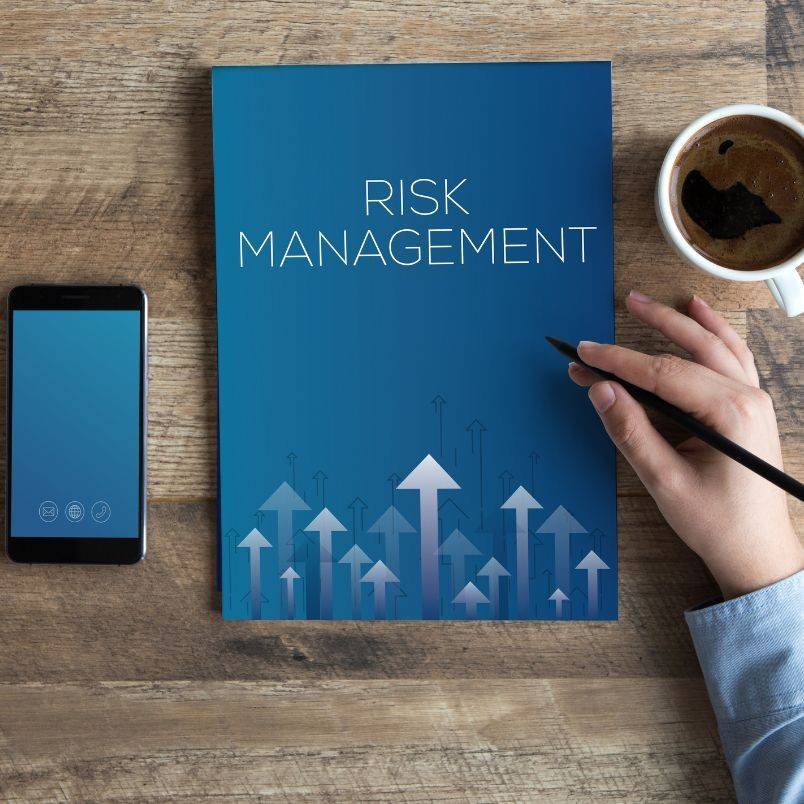Risk Register: A Simple Guide for Busy Project Managers
Author: Alvin Villanueva, PMP; Editor: Geram Lompon; Reviewed by: Grace Payumo, PMP
Are you feeling overwhelmed by the potential risks that could derail your projects? Budget overruns, delays, and unforeseen issues can feel like constant threats.
Without a structured system for identifying risks and a risk response plan for addressing them, your projects are always on the edge.
However, imagine having a precise, reliable tool that helps you spot risks early and prevent them from growing into more significant problems. This method will reduce stress and help you take control of your projects.
Whether you are a new project manager or a seasoned pro, enhancing your
We have even created a Risk Register template to help you get started—so you can apply these methods immediately!

What is a Risk Register?
A Risk Register is a crucial
By regularly using risk scores and updating the Risk Register, you can clearly understand your project’s risks and take immediate action to address them.
Without it, risks are unpredictable, leading to surprises and unnecessary stress. A well-maintained Risk Register gives you control over your risk description and project’s trajectory, allowing you to act quickly when risks arise (PMI, 2021).
Why You Need to Use a Risk Register
Leveraging a Risk Register can transform the way you handle project risks. It is not just about identifying problems—it is about staying one step ahead and making strategic decisions to mitigate risks that keep your project on track.
Here are the top reasons why using a Risk Register is essential for your success:
- Prevents Surprises: Identifying risks early minimizes the chance of unexpected issues (Hillson, 2017).
- Improves Decision-Making: A clear understanding of potential risks empowers you to make smarter, more strategic choices (Kerzner, 2019).
- Enhances Communication: A Risk Register allows you to communicate clearly with stakeholders about potential challenges and your mitigation strategies (PMI, 2021).
- Increases Project Success: Projects with a strong risk management plan are likelier to stay within budget, meet deadlines, and deliver quality results (Cheng, 2020).
- Promotes Proactive Culture: A Risk Register encourages a mindset of anticipating challenges and addressing them before they escalate (Hillson, 2017).
Our approach to proactive risk management simplifies this process, making it adaptable and easy to track and manage risks without feeling overwhelmed.
The result is better control, smoother project execution, and more successful outcomes (Kerzner, 2019).

How to Create and Maintain a Risk Register: Step-by-Step
Creating a Risk Register does not have to be complicated.
Follow these steps, and you will have an organized risk management tool that allows you to manage risks effectively.
1. Identify Potential Risks
Start by brainstorming all possible risks that could affect your project.
These might include delays, budget issues, resource constraints, or external factors like market shifts. Involve your team in the risk management process to ensure that you identify as many risks as possible. Don’t discount any potential threat—sometimes, minor issues snowball into more significant problems if left unaddressed (PMI, 2021).
To stay organized, categorize the risks into financial, technical, operational, or external areas.
2. Evaluate Risk Likelihood and Impact
Once you have identified the risks, evaluate their likelihood and impact.
This is where you assess how probable each risk is and how significant its consequences would be if it occurred (Hillson, 2017). Use a risk matrix to rate each risk on a scale from low to high for both likelihood and impact.
By focusing on high-priority risks, you can develop effective mitigation strategies that reduce risk probability and their impact on the project (Kerzner, 2019).
3. Assign Ownership of Risks
Next, assign a responsible person to each risk.
This individual will monitor the risk and implement the necessary mitigation strategies (PMI, 2021). Assigning risk ownership also ensures accountability and that no risks are left unchecked.
Choose someone with the expertise and authority to act if the risk materializes (Cheng, 2020).
4. Develop Mitigation Strategies
For each high-priority risk, develop a strategy to reduce its likelihood or minimize its impact.
Mitigation strategies might include preventive actions like building buffer time into your schedule or contingency plans to implement if a severe risk event occurs. Consider the best ways to handle each risk, including options like transferring the risk, outsourcing, or adjusting your resources.
A solid mitigation plan ensures that you are ready for anything (Cheng, 2020).
5. Review and Update Regularly
Risk management is an ongoing process, not a one-time task.
As your project progresses, new risks may arise, and existing risks may evolve. Regularly review and update your Risk Register to ensure it reflects the current state of your project. Adjust priorities, mitigate new risks, and ensure your strategies are still effective (PMI, 2021).
This risk management framework helps you remain proactive and adaptable as challenges emerge (Hillson, 2017).

Best Practices for Effective Risk Register Management
Creating and maintaining a Risk Register is an essential part of
- Flexibility: Risk management is dynamic—do not be afraid to update your Risk Register as the project evolves. A static register is less useful as risks change (Kerzner, 2019).
- Detail and Clarity: Clearly describe each risk’s potential impact and your mitigation strategy. This ensures that everyone involved knows exactly what to do and can respond quickly when needed (PMI, 2021).
- Collaboration: Involve your whole team in the risk identification and management process. Different perspectives lead to better solutions and more comprehensive risk coverage (Hillson, 2017).
Going Beyond: Enhancing Your Risk Register
To take your risk management to the next level, consider these advanced risk response techniques:
Use Advanced Tools:
Software tools designed for risk management can make tracking risks easier and more efficient. These platforms allow you to assess and monitor risks in real-time to respond more quickly (Kerzner, 2019).
Run Risk Simulations:
“What-if” scenarios can test the effectiveness of your mitigation strategies. These simulations help uncover weaknesses and prepare you for possible outcomes (Hillson, 2017).
Continuous Improvement:
Make the Risk Register a learning tool. After completing each project, review your register, assess what worked, and refine your approach for future projects (PMI, 2021).
Alternatives to Using a Risk Register
While the Risk Register is a standard tool, other methods can complement or replace it, depending on the risk owner or project’s scope and complexity:
Risk Breakdown Structure (RBS):
This approach organizes risks into categories, helping you track risks by type (financial, technical, etc.). It is beneficial for large, complex projects (PMI, 2021).
SWOT Analysis:
A SWOT analysis identifies strengths, weaknesses, opportunities, and threats within a project. It is a valuable tool for smaller projects or those seeking a broader perspective (Kerzner, 2019).
Monte Carlo Simulation:
For projects with high uncertainty, Monte Carlo simulations model multiple scenarios to predict and manage risk. While data-intensive, it is invaluable for highly complex projects (Hillson, 2017).

Wrapping Up and My Experience with Risk Management
By following these steps to create and maintain your Risk Register, you are setting yourself up for better control, improved decision-making, risk priority, and, ultimately, more successful projects. Risk management does not have to be overwhelming when you have a transparent process.
As a PMP, I have seen firsthand how a well-maintained Risk Register can make a difference in delivering successful projects.
I have worked with many teams, and one thing is clear: having a solid Risk Register is always a game-changer. Start building your Risk Register today, and elevate your

Key Takeaways
- A Risk Register is crucial for identifying, assessing, and managing risks across the project lifecycle.
- Evaluate risks based on their likelihood and impact to prioritize actions and allocate resources effectively.
- Assign clear ownership for each risk to ensure accountability and prompt action.
- Regularly review and update the Risk Register to stay proactive and adaptable.
- Use advanced tools, risk simulations, and collaborative processes to enhance your risk management strategies.
- Continuously refine your approach to risk management to ensure more tremendous success in future projects.
Download our free Risk Register template to manage risks effectively in your projects today!
References
Cheng, M. (2020). Managing project risks: Best practices and techniques . Wiley.
Hillson, D. (2017). The entire risk analysis and management handbook: A practical guide to managing the multiple dimensions of risk . Kogan Page.
Kerzner, H. (2019). Project management: A systems approach to planning, scheduling, and controlling (12th ed.). Wiley.
PMI. (2021). A guide to the

